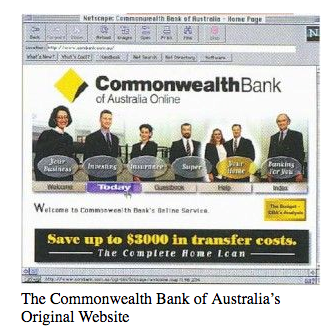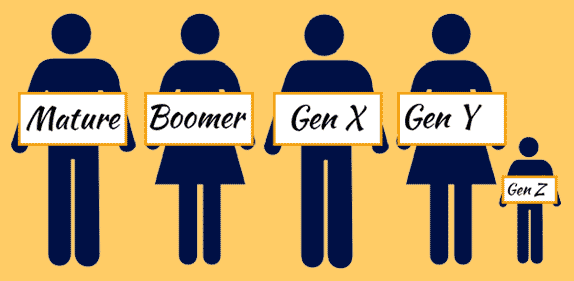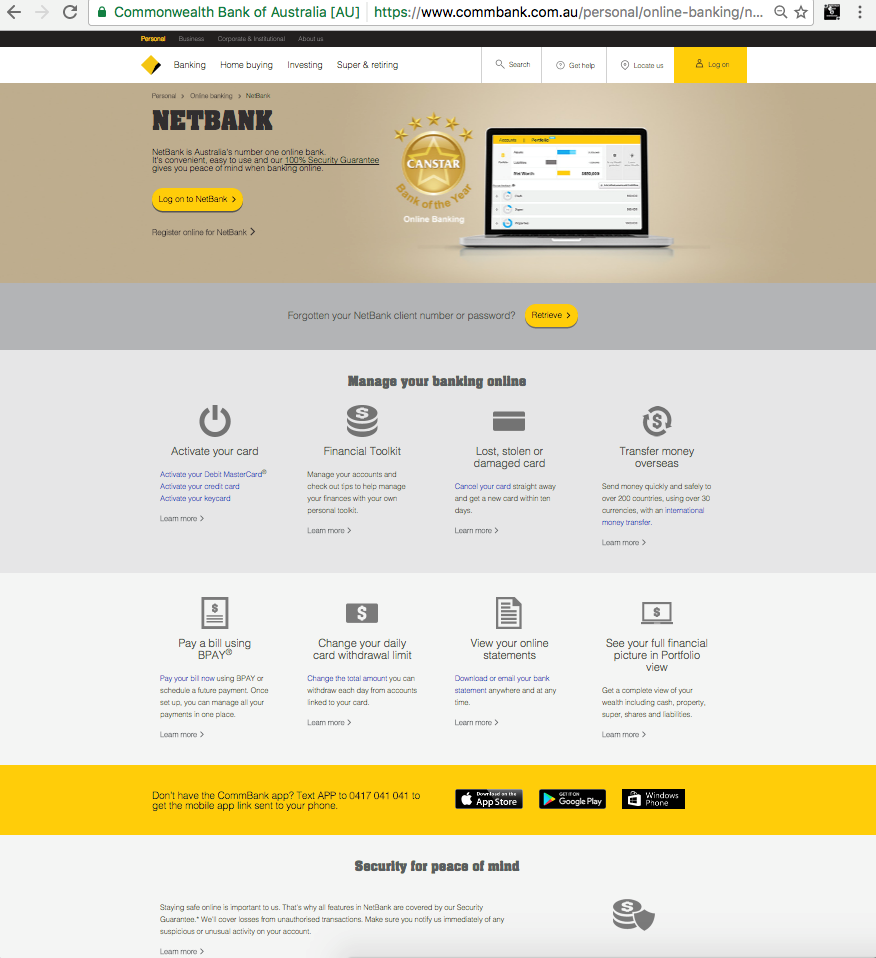October means Christmas is Near
 Well it’s now October and if you’re a retailer that means that you’d better start preparing for the Christmas rush. There are only two months and one week to maximise your sales and if you’re an online retailer then not only do you have competition from local businesses, you also have competition from online retailers and websites such as eBay and Amazon. We’ve compiled a list of the top five ways you can prepare for the Christmas season so that you get as many customers through the metaphorical door as you possibly can.
Well it’s now October and if you’re a retailer that means that you’d better start preparing for the Christmas rush. There are only two months and one week to maximise your sales and if you’re an online retailer then not only do you have competition from local businesses, you also have competition from online retailers and websites such as eBay and Amazon. We’ve compiled a list of the top five ways you can prepare for the Christmas season so that you get as many customers through the metaphorical door as you possibly can.
Firstly, it’s really important that your SEO is good. For those unfamiliar, SEO is shorthand for search engine optimisation. That’s how well your website appears on Google. There’s a saying that if you’re not on the first page you might as well not exist and that the second page would be the ideal place to hide a body. The reason is, nobody looks at the second page and beyond. Only the first page matters.
The best way you can ensure you have a high ranking is that you use searchable terms. Nobody is going to search “image 43826388372” but they are likely to search for terms such as “best Christmas gift ideas” so when you’re updating your site, use that term and similar for your alt image text and your keywords.
Its also really important that you have good online content. The reality is that a website with only 20 words is unlikely to be found by Google. You’re best to have at least 300 words per page and include searchable terms but don’t use the terms too much because that can be counterproductive and hurt your ranking.
Next up, you need to make sure you have your Google keywords right. If you don’t you could find yourself wasting money and not getting a lot of return on your investment. That impacts any business’ bottom line but especially small businesses who often run very tight margins. Target your keywords really carefully. By doing so you’re more likely to reach your target market and you reaching your target market you’ll increase your customer base. You don’t want your customers going elsewhere. There’s a lot of money to be made at Christmas time but you need to ensure you market yourself correctly.
It’s essential that when you do your social media marketing in the lead up to the Christmas rush, you target your ads very carefully. Google Analytics can help you out with this. You see, you may think your market is Group A but it could actually be entirely different. Target your advertising on Facebook and other social media sites very carefully. Of course, one other thing to bear in mind is that you should post your ads at the time your audience will be online. It’s no good posting ads when your audience isn’t online. That will just lead to significant wastage and cost you in the long run. That’s the last thing you want. Monitor your competitor and mimic them if you can but ensure you have a point of difference as well.
One point of difference is reliability. How many times have you read in the news that people ordered a product for Christmas yet they didn’t receive it in time or worse yet, they didn’t receive it at all? Make sure that you only advertise products you have in stock or make it clear on your website when people can expect delivery. If you have only 50 iPhone 7s in stock then ensure that your website reflects the true quantity. There’s nothing worse than when a customer buys a product online but can’t get it for a few weeks. It can be really off-putting for them.
These are just a few ways that you can use the Christmas rush to your advantage and increase the number of customers you get through the door. There are of course many others but these tips of SEO, social media marketing and stock levels will get you started on your way to a lucrative Christmas period.
Online shopping is constantly evolving and growing after several decades of operation
E-commerce is constantly evolving and growing after several decades of operation. Today we don’t think of it as a big deal, but what was it like when it first came about? It may seem like online shopping has only been around for the last ten or so years, but were you aware that it actually came about in the late 1970s.
Originally e-commerce, which includes online shopping commonly known was set up for communication between customers and businesses. It evolved considerably since then.
If you’re Generation Y or older, you’ll probably remember the impact Napster had on the music world in the late 90s. Napster was a company which owned a music file-sharing website, where people could transfer music saving them the need to go to a physical store and buy a CD, or in that time, a cassette as well. Napster revolutionised the way people interacted with their music and paved the way for other businesses to enter the e-commerce market. Napster had broken down the barrier between the idea of online shopping and people actually being willing to do so and seeing the benefit in doing so. The immediate benefit in Napster’s case was that people could buy individual songs instead of full albums, which enabled them the opportunity to only buy the music they wanted, without buying what are commonly known as album fillers.
Over time, people’s willingness to conduct business online changed, and in the 1990s, online banking was introduced into Australia. It looked very different to what it does today. People would take a floppy disk and install software on their computer which gave them the option of checking their balances and making transactions. Unlike today, where internet banking is free, there was a considerable cost involved.
Below Commonwealth Bank’s first website, courtesy of research company, Canstar.
 Source: http://www.canstar.com.au/online-banking/history-of-internet-banking/
Source: http://www.canstar.com.au/online-banking/history-of-internet-banking/
Today their website looks dramatically different.
Source: www.commbank.com.au
The site has significantly advanced features and more than half of people have used internet banking in the last year. People’s willingness to embrace e-commerce goes further than that. They’re also willing to conduct their internet banking on their mobile phones when they’re on the go.
Of course, e-commerce isn’t just about banking. It’s also about online shopping. According to the Australian Bureau of Statistics 56% of Australian internet users had used the internet to make a purchase. This was in 2009. That number today would be much greater.
That provides a huge opportunity for businesses to capitalise on a completely new market that they previously didn’t have access to. Online shopping allows people to make purchases at a time that is convenient for them. They are not limited by traditional opening hours. If they’re unable to leave their home or live in a rural area, they’re not limited by geography either. They can purchase from stores in other locations, which gives them more choice. Online shopping has enabled people access to international retailers. The impact of that has been dramatic. Retailers such as Sephora, Zara and H & M have entered cities in Australasia as a direct result of that online shopping behaviour. Those retailers can then save on freight charges, and consumers benefit from having their favourite stores in their own backyard.
Of course, on the flipside, while it’s great for international retailers who want to expand, it’s not so good for local retailers who don’t have the capacity to expand. They face increased competition and that has hurt their bottom line, and in some cases led to store closures. A recent example of a retailer which floundered was Dick Smith Electronics. They had been in the market since 1968, and after 48 years of operations closed their doors earlier this year because they couldn’t compete with online prices and competition. Changing technologies had rendered many of their products redundant and they’d failed to establish themselves in a new niche.
To a lesser degree, department stores like Myer, David Jones and banks have also closed stores and branches because more and more business is being conducted online. Although this is generally a good thing for consumers, the downfall is that people are losing the human element of shopping and they are not seeing items prior to purchase.
Another impact of the emergence of e-commerce is that everyone thinks they can set up a store and be successful. They’re under this illusion that they’ll have access to a huge market. The reality is somewhat different though. There is only so much money in the economy, so with more and more players in the market competing for the dollar, it is harder to get a share of the pie.
Of course, online shopping and e-commerce opens a raft of possibilities for consumers and innovative businesses, and they can take the opportunity, but they need to be aware that they need to market their products and services more wisely and that competition is much greater than it was when there were only bricks and mortar stores to compete with.
How to market to consumers online when loyalty is difficult
 For years, all we heard about was Generation Y and how we needed to market to them. Of course, it’s been about a decade now and a new generation has emerged, Generation Z, and like every generation before them, they are harder to market to. Retailers, especially online retailers much approach them differently to how other generations have been approached.
For years, all we heard about was Generation Y and how we needed to market to them. Of course, it’s been about a decade now and a new generation has emerged, Generation Z, and like every generation before them, they are harder to market to. Retailers, especially online retailers much approach them differently to how other generations have been approached.
The difference between Generation Z and other generations that came before them is that Generation Z has greater access to mobile phones and the internet. That is the first problem.
With greater access to the internet and technology Generation Z has more choice at their disposal. If they don’t like the stock in one store, they can simply look online for another clothing store or electronics store. The possibilities are endless.
Increased choice also means that they can simply go to a new retailer if they don’t like what’s on offer.
Loyalty programs no longer work. There is so much choice available. Generation Z, despite their infatuation with social media, does not want to hand over their details to retailers to be mass marketed to. Traditional techniques don’t work. Basically, if it doesn’t make their life easier, or could complicate their life in any way then they don’t want to know about it.
Generation Z is heavily influenced by what their peers say. If a product has a bad review online then that is really hard for a retailer to come back from, even if they discount it to counteract the negative review. It poses a real challenge. Retailers, or any business for that matter, has always needed to work hard to maintain their customer base, however, when people can share their negative experience just as fast as it took place, retailers really need to work to keep their customers happy.
One bad review can undo months, or even years of hard work and this generation isn’t quick to forgive. Although they don’t place emphasis or value on loyalty, they do want to be able to trust their retailers. In an age when governments can’t be trusted that is even more important for Generation Z.
This behaviour has partially been shaped by the time in which they grew up. Unlike Generation Y, which grew up in a relatively good economic climate, Generation Z has grown up in a recession and it being much harder to obtain employment. These events mean they are less likely to part with their money than other generations. They want to know that what they’re buying is good value and that they will not end up worse off if they buy the product.
That could be through interactive promotions, similar to Pokemon Go! Many cafes, across the world, capitalised on the trend by offering Pokemon Hot Spots. They were seen as hip and cool and gained access to customers they otherwise wouldn’t have had access to. Retailers need to think outside the square and be quick to respond to and anticipate the next trend.
At the moment the Olympics are on, so it would be worthwhile for online retailers to offer promotions related to the Olympics. Businesses need to keep up to date with what is going on in the world otherwise they’re going to be left behind and will be perceived as not knowing what they’re doing. Generation Z is less forgiving of that type of behaviour than other generations.
The biggest difference for retailers is that unlike previous generations, Generation Z is the first who truly has the world at their fingertips. They can literally access every single product in the world at the tap of a phone and know the best price, the most popular trend. No other generation before them has grown up like this.
In a nutshell, if you want to appeal to Generation Z you need to:
1 – Follow current trends.
2 – Tell the truth and be honest.
3 – Ensure that you have positive reviews. That means you will need a web presence. Basically, if you don’t have an online presence you might as well not exist. If you can’t be Googled then how will people know you’re legitimate?
4 – Don’t bother with loyalty programs. Generation Z doesn’t have the patience for them. They want convenience rather than annoying cards and other monitoring material.
5 – Offer value for money.
If you follow these tips then you are sure to win the hearts of Generation Z and successfully sell to them online or in a physical store.
Different online shopping habits of various Generations
 Everyone approaches online shopping differently, but were you aware that every generation has a different behaviour when it comes to shopping? Some generations are thrifty and don’t like to spend much money, while others live in the moment saying YOLO (for those who don’t know, that means you only live once).
Everyone approaches online shopping differently, but were you aware that every generation has a different behaviour when it comes to shopping? Some generations are thrifty and don’t like to spend much money, while others live in the moment saying YOLO (for those who don’t know, that means you only live once).
As a result, marketers must cater for these different behaviours and with the world of online shopping that can be both trickier, and easier at the same time.
For starters, millennials and baby boomers are living in smaller spaces which means they don’t need as many items for their home as previous generations. They can get by with much fewer items for their home.
That said, there is another side to the story. Millennials are moving out of the home and must, therefore, buy furniture for their new apartment or house, most likely a house though if they live in a major city in Australia.
With the rise of fast fashion and cheap outlets like Zanui, people do not want to spend huge amounts on furniture and will often hunt around for the cheapest item they can find.
There is, however, an opportunity for retailers to capitalise on this and market their products towards these groups.
Baby boomers are willing to spend money in other areas.
According to research, they’re investing money into homewares and travel, so there are opportunities for online stores to promote these products to a greater extent than they presently are. That’s where the real opportunity lies.
Marketers need to take a different approach when dealing with millennials. Millennials have a much higher disposable income from other generations and as such, they have unsurpassed spending power.
With that though comes increased demand. Millennials know what they want and given they’ve all grown up with the technology they’re able to research the best deals online so they have all the facts in front of them prior to shopping.
Despite millennials wanting the best price around and despite the rise of fast fashion, they are loyal to their preferred brands when shopping.
Generation Z, the generation born after the mid-1990s, although like other generations there is no particular date, are less loyal to their brands. In fact, they don’t even have “their brands”. They are much more about price and will switch brands if they find cheaper elsewhere.
With increasing numbers of Generation Z consumers, marketers are faced with a real challenge. Once upon a time, it was possible to market to your consumers based on loyalty and relationships. Anyone in sales or who have known people who have sold products knows the importance of relationship building, and that you must develop a relationship with your consumers. That relationship can be performed in numerous ways, including through discounts for loyal customers, special products and rewards for loyalty etc.
As mentioned though, it’s harder to reach Generation Z this way so marketers must look to other ways.
When making purchasing decisions they consider online reviews and like to know what their peers are saying about brands or products. Despite them not being loyal to their brands, trust is a big factor that will influence their shopping habits. They are not fast to trust strangers and unsurprisingly they hate being lied to.
It has been well documented in the past that millennials do not like being tied down. While other generations liked the security and didn’t mind being locked into contracts, Millennials like to have the freedom to move around and shop for the best deal. That’s much harder to do if you’re locked into a two-year contract.
Millennials know all too well that they may miss out on a better deal if they are locked into a contract and that is why they avoid them. Millennials like to maintain freedom and the ability to choose.
That is why online shopping is fantastic, it allows consumers the choice and ability to conduct prior research before they buy a product. They can become fully informed without being locked in, and brands don’t lose out on possible consumers.
Comparison vs Daily Deal websites
 There are so many different types of websites online offering discounts and advice around the best possible online deal. With so many, it’s easy to get confused and not know the differences between what a daily deal and a comparison site are. Luckily for you, we’ve done the research and can take away the mystery for you.
There are so many different types of websites online offering discounts and advice around the best possible online deal. With so many, it’s easy to get confused and not know the differences between what a daily deal and a comparison site are. Luckily for you, we’ve done the research and can take away the mystery for you.
So what exactly is a daily deal website and how does it differ from a comparison site? Firstly, we must discuss what a daily deal website is.
A daily deal website is a website which offers daily deals. They offer daily deals based on agreements with retailers that are, as we’ve just explained, daily deals. They are limited offers. Generally speaking, daily deals will only last for up to a few weeks. Most commonly they will appear on the website for a few days at a time.
The main selling point of a daily deal is that they are a limited offer. They are only available for a short period of time to a select number of people and will not be extended.
There are many daily deal websites like Scoopon, Groupon and others. They specialise in restaurant, travel, health and fitness and other small goods that you would generally want a discount on.
The discount you get on daily deal websites can be anywhere from 10% right up to 50% and in some cases, it will be much higher. It comes down to the individual retailer who is offering the deal through the website.
Of course, what many people are not told up front is that a daily deal will normally have add-ons. That means that if your deal is for a drink and a meal at a restaurant it will only be up to a certain value and if you want to go above that value you will need to pay more.
The goal of daily deals is to get you in the door. Once you’re in the door it is easier to get your money and much easier to upsell to you. It’s like any sale. Getting the first part of the sale is always the hardest part but once you have crossed that threshold it is much easier to upsell to you. The key for businesses wanting to upsell is that their product must be good enough to entice the customer to spend more money.
Comparison sites are completely different from daily deal websites. The only similarities between the two is that they are websites and they are online. There is no other similarity.
A comparison website is designed so that people can compare various brands in a particular category. For example, comparison sites are popular across the following industries:
- Airlines
- Electricity
- Insurance
- Credit cards
A comparison site will take all the major brands and even some of the non-major brands that you wouldn’t think of when looking to change your insurance or credit card provider. They will then list the features of each product and you will be able to compare the different prices that are on offer.
Price isn’t all that is compared to a comparison website. They also analyse the features and benefits such as:
- What is the interest rate?
- What add-ons do I get?
- What rewards are available?
The comparison sites will analyse how the features and benefits stack up with the cost of the product.
Unlike product reviews which take a stance, comparison sites will review the products with impartiality and just lay out the facts for you without an opinion.
Comparison sites allow people to conveniently see what various brands are offering in one location and then make an informed decision on what product or service to purchase rather than just going with what seems like the best deal, but may not be.

